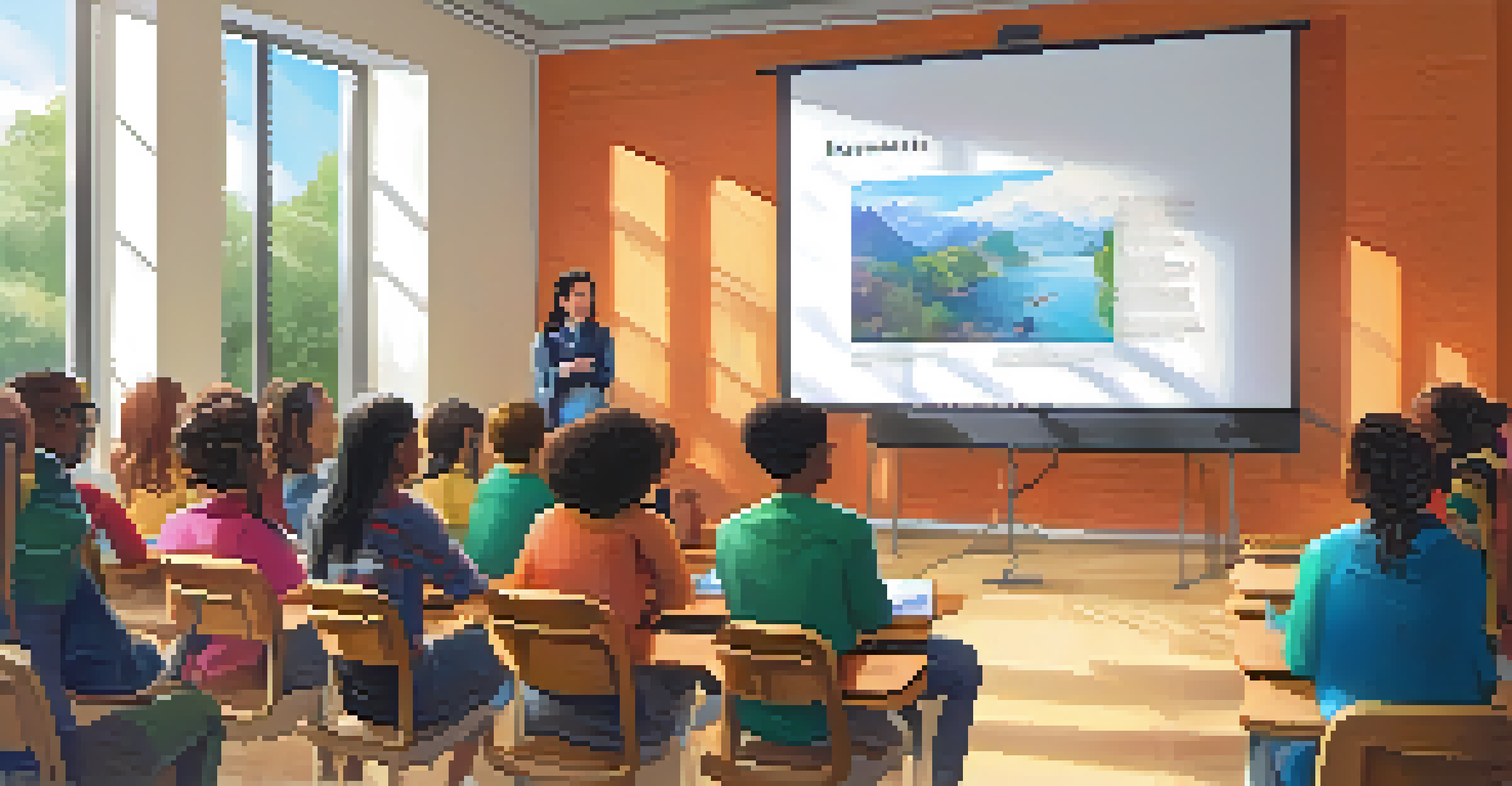Strategies for Encouraging Student Leadership in Projects

Understanding the Importance of Student Leadership
Student leadership is crucial in fostering a sense of responsibility and ownership among learners. When students take on leadership roles, they not only develop essential skills but also contribute positively to their peers' learning experiences. This dynamic encourages collaboration and enhances the overall project outcomes.
Leadership is not about being in charge. It is about taking care of those in your charge.
Moreover, student-led initiatives can lead to increased engagement and motivation. When students feel that their voices matter, they are more likely to invest themselves in the work at hand. This investment can spark creativity and innovative solutions to challenges within the project.
Finally, cultivating leadership skills in students prepares them for future opportunities. Whether in higher education or the workforce, the ability to lead and collaborate effectively is invaluable. Thus, understanding and promoting student leadership is a foundational element of project-based learning.
Creating a Supportive Environment for Leaders
A supportive environment is essential for nurturing student leadership. This means providing the resources, guidance, and encouragement students need to thrive. When educators actively foster a culture of trust and respect, students feel empowered to take initiative and share their ideas.

Additionally, incorporating team-building activities can help students build relationships and develop a sense of belonging. When students know each other well, they are more likely to collaborate effectively and support one another in leadership roles. This unity can enhance the overall success of the project.
Fostering Responsibility in Students
Student leadership encourages learners to take ownership of their projects, enhancing collaboration and creativity.
Lastly, recognizing and celebrating student achievements can boost confidence and motivation. When students see their hard work acknowledged, they're encouraged to take on more significant challenges. This recognition can be as simple as verbal praise or more formal awards, but it goes a long way in reinforcing positive leadership behaviors.
Encouraging Student Ownership in Projects
Encouraging student ownership is a powerful way to promote leadership. When students have a say in project topics, goals, and responsibilities, they're more invested in the outcomes. This sense of ownership can lead to higher quality work and a deeper understanding of the subject matter.
The greatest leader is not necessarily the one who does the greatest things. He is the one that gets the people to do the greatest things.
To facilitate this, educators can implement flexible project guidelines that allow for student input. By giving students the autonomy to make decisions, they learn to weigh options and consider the impact of their choices. This practice not only fosters leadership but also critical thinking skills.
Moreover, incorporating reflection sessions throughout the project can help students assess their contributions and leadership styles. By encouraging students to think about what worked and what didn’t, they can refine their approach and build on their experiences for future projects.
Setting Clear Expectations and Goals
Clear expectations and goals are essential for effective student leadership. When students understand what is required of them and the project's objectives, they can better navigate their roles. This clarity helps prevent confusion and ensures everyone is on the same page.
Educators can collaboratively set goals with students, allowing them to contribute to the project's direction. By involving students in this process, they are more likely to feel a sense of accountability and commitment. This shared ownership can enhance motivation and drive project success.
Creating a Supportive Culture
A nurturing environment with trust and recognition empowers students to embrace leadership roles and achieve success.
Additionally, regular check-ins can help maintain focus and direction throughout the project. These touchpoints provide opportunities for students to discuss progress, address challenges, and celebrate milestones. This ongoing dialogue reinforces the importance of leadership and teamwork.
Leveraging Peer Mentorship Opportunities
Peer mentorship can be a game-changer in developing student leadership. By pairing experienced students with those seeking guidance, both parties can benefit from the relationship. The mentor gains leadership experience, while the mentee receives support and encouragement.
This approach not only strengthens the leadership skills of mentors but also fosters a collaborative learning environment. When students work together, they can share diverse perspectives and ideas, enriching the project experience for everyone involved. This collaboration can lead to innovative solutions and increased engagement.
Moreover, establishing a formal mentorship program can provide structure and consistency to this process. Educators can facilitate these relationships by matching students based on their strengths and areas of growth. This structure can enhance the effectiveness of peer mentorship in student leadership development.
Integrating Technology to Enhance Leadership Skills
In today's digital age, integrating technology into projects can significantly enhance student leadership opportunities. Tools like collaborative platforms and project management software allow students to communicate effectively and manage tasks more efficiently. This tech-savvy approach prepares them for modern workplace environments.
Furthermore, technology enables students to showcase their work and leadership skills to a broader audience. By using social media or blogs, they can share their project experiences and insights, gaining recognition and feedback from peers and mentors alike. This visibility can motivate students to strive for excellence.
Integrating Feedback for Growth
Constructive feedback and peer mentorship promote continuous improvement, essential for developing effective leaders.
Lastly, leveraging technology can facilitate remote collaboration, allowing students to work together even from different locations. This flexibility broadens their experiences and prepares them to lead in diverse, global environments. Embracing technology, therefore, is key to fostering leadership in today's educational landscape.
Providing Constructive Feedback for Growth
Constructive feedback is vital in promoting student leadership development. By providing specific, actionable insights, educators can help students understand their strengths and areas for improvement. This feedback should focus on behaviors and strategies rather than personal attributes, encouraging growth and reflection.
Moreover, fostering a culture of peer feedback can empower students to take ownership of their learning. When students practice giving and receiving feedback, they develop critical communication skills and learn to appreciate diverse perspectives. This practice can enhance their leadership abilities and collaboration within the project.

Additionally, feedback should be an ongoing conversation throughout the project, not just a one-time event. Regular check-ins allow students to adjust their strategies and approaches based on input, promoting continuous improvement. This iterative process helps students develop resilience and adaptability—key traits of effective leaders.